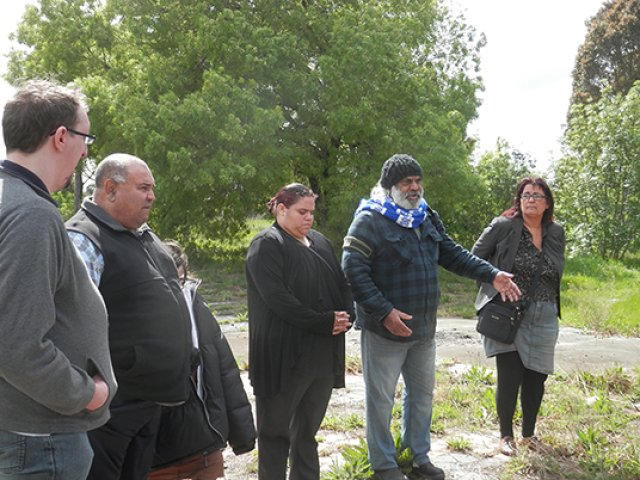
Campaigners hoping to save the Ballerrt Mooroop former Aboriginal school site in Glenroy were in shock after Victorian Labor education minister James Merlino sent them a letter on November 23 announcing that the site would be sold.
Ballerrt Mooroop Working Group chairperson Dorothy Bamblett challenged the government's decision. “It is still possible to save the site,” she said. “The fight isn't over. We have to rally around to stop the government selling off the site. If we lose the site, it will be gone forever. We have to act now.”
The Ballerrt Mooroop site in Glenroy, in Melbourne's northern suburbs, was a former Aboriginal school which was closed by the Liberal state government in 2012 against the wishes of the students and parents who had protested the closure.
In a heroic defiance, the Aboriginal school community — including parents, students and supporters — occupied the school gym and gathering place for 10 months to stop the school from being closed.
In late 2011, the Aboriginal community thought they had won a reprieve. But a principal, brought in on a short-term contract, expelled the remaining children without providing any alternative educational pathway.
In 2012, a car crash involving a stolen car ended in three Aboriginal teenagers being killed and three seriously injured, including one former student from the Ballerrt Mooroop College. The community felt that if the school had still been open, the teens would have been engaged with schooling instead and the car crash might not have happened.
This tragedy reignited the campaign to win the site back to set up a First Nations community hub.
Bamblett was one of the first students at the school when it opened in 1995. She pointed out that thousands of Aboriginal people had walked the site historically and in more modern times. She said the closure of the school had destroyed the local Aboriginal community. “It took away education and it took away their gathering place. The decision demoralised the community.
“Now the campaign is focused on stopping the state government from selling off the land and keeping it for a First Nations community hub. The site also includes a Spirit Tree dedicated to an elder and a ceremonial ground.”
Aboriginal elder Gary Murray, Ballerrt Mooroop working group member and spokesperson for the Victorian Traditional Owner Land Justice Group, told Green Left Weekly that there used to be four Aboriginal schools in the state — Glenroy, Mildura, Swan Hill and Morwell — but they have all been closed now.
“Our kids were dispersed to the mainstream or to the unemployment ranks. Over $3 million for the four schools was clawed back from our communities by the education department and reallocated to areas unknown”.
The traditional owners Wurundjeri Tribe Land and Compensation Cultural Heritage Council, known as the Wurundjeri Council, decided in September to take up the campaign to save the site. They are calling on the state government to delay the sale for at least 12 months to enable a feasibility study to be undertaken for a community hub.
“The shared vision for Ballerrt Mooroop, which means 'strong spirit' in Woi-wurrung, the language of the Wurundjeri people, is to build an economic base for the Wurundjeri community and establish a centralised service delivery hub for the currently under serviced Indigenous population of Melbourne's northern metro region. It would be a community centred place to promote and support the cultural, physical, economic, spiritual, social and emotional well-being needs of indigenous people,” the statement read in part.
Socialist Alliance councillor for Moreland Sue Bolton, who took part in the protests to stop the closure of the school in 2010-2011, and won council support for saving the site, told Green Left Weekly: “We can still stop the government in its tracks but we don't have a minute to lose.
“This site would be of benefit to the whole community because it could be a place of cultural exchange between the traditional owners, the dispersed First Nations and the non-Indigenous community.
Bamblett said: “When you look around Moreland and other municipalities, you don't see any evidence of the First Nations communities other than little plaques on buildings.
“If we can win this land back and get our community hub, it would be unique. At the moment there is nowhere for us to gather and learn and pass on culture. There is also a lack of services for the Aboriginal community in the north-west of Melbourne.
“When the school closed, they [government] took away our heart. Getting a community hub on the site would give our heart back.”
Like the article? Subscribe to Green Left now! You can also like us on Facebook and follow us on Twitter.